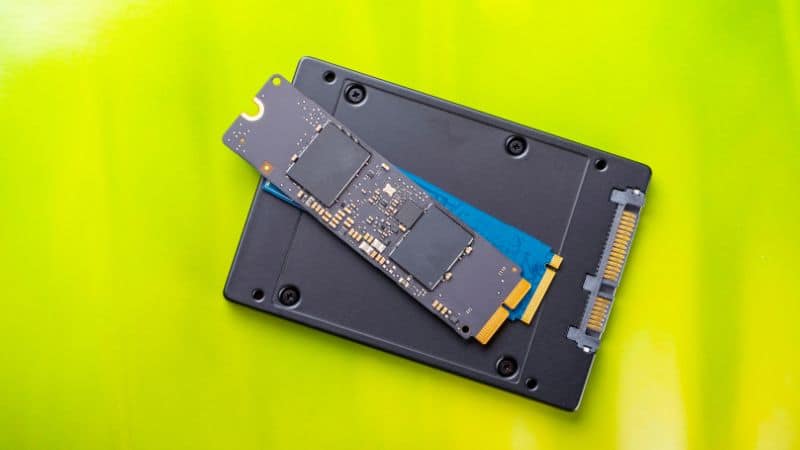What Is An NVMe SSD?

Table of Contents
These days we want faster, more robust data transfer to speed up both home and business computing.
It's this insatiable desire for efficiency that births faster and faster storage drives. But what is an NVMe SSD – the latest standard, of SSD technology? Read on to decode this esoteric jumble of letters!
What Is An SSD?
Before we delve into the NVMe side of the puzzle, let's first establish what an SSD is. Used for long-term data storage, SSDs (Solid State Drive) are essentially an evolution of the hard drive (HD).
These drives are referred to as “solid” because – unlike mechanical hard drives – they don't use any moving components, amounting to improved thermals, improved energy efficiency, a more robust build, and quieter performance.
SSDs are also much quicker, as signals can travel faster through stationary electrical circuitry than they can when a moving component is involved.
What Does NVMe Mean?
NVMe stands for Non-Volatile Memory Express, and it's an upgraded SSD technology that speeds up data transfer to an even further degree. It supersedes the SATA (Serial Advanced Technology Attachment) SDD standard that maxed out at 500–600 Mbps, establishing 2000 Mbps as the new normal, but how does it pull this remarkable feat off?
Well, hard drives and older SSDs utilize what's known as point-to-point serial protocols to transfer data between the storage unit and the motherboard of a computer. In plain English, this means cables are used to link the drive to the motherboard.
Next came an SSD protocol that combined cables and ports to link up the two components, but the magic of the NVMe standard is that it cuts out these connections altogether in favor of a direct input on the motherboard.
Reducing the material signals have to travel through and the physical distance the data must traverse reduces latency significantly, making NVMe the speed demon that it is!
This port in the motherboard is known as the PCIe bus, which is where that little “e” comes from on the end of NVMe. PCIe slots are designed to accommodate hardware expansions, i.e. beefy discrete GPUs. However, now that storage technology has caught up with transfer tech, the PCIe slot and the NVMe SSD are perfect partners in crime.
What's The Downside Of The NVMe SSD?
It's faster, more energy efficient cuts down on some excess cabling… What’s not to like? Well, the only real drawback of the NVMe SSD blueprint is the price tag, but as it marks such an improvement on the next best thing (SATA), it's not a bad investment, especially considering it's going to be the standard for the foreseeable future.
NVMe might not be the most budget-friendly storage solution but think of the productivity gains individuals and businesses would make with such a fast data transfer protocol.
Besides, one NVMe SSD today will be prime for use indefinitely, whereas older SSD variants will fall behind related technologies comparatively quickly, necessitating multiple replacements.
When it was released, NVMe was a nice-to-have, but these days, despite the cost, NVMe SSD storage is the smart choice if you're thinking of picking up a new computer/laptop or starting a new build.
Final Thoughts
Our advice is to jump on the NVMe bandwagon as soon as possible, as, simply put, this upgrade is going to have the largest real-life impact on your computing, especially if you’re a consummate gamer or busy videographer.
That said, bear in mind that although any NVMe SSD will surely give your system the kick in the pants you've been dreaming of, they're not made equal. Some are better than others, so don't skimp on the research side of shopping around!
